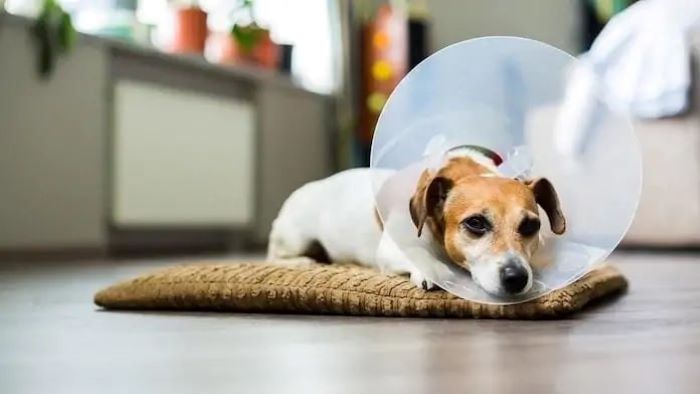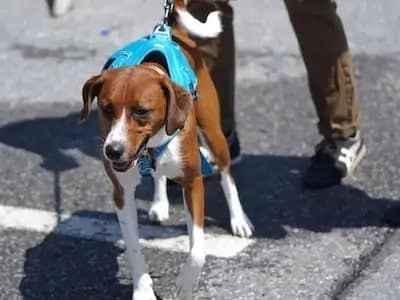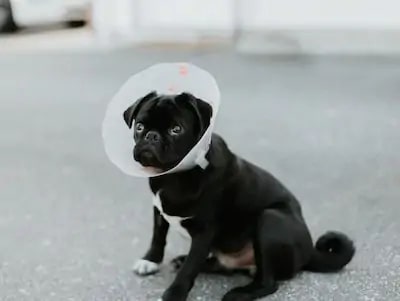Neutering is a common procedure for dogs that offers numerous benefits, including population control and potential health advantages. After the surgery, pet owners often have a pressing question on their minds: “How soon can I walk my dog after neutering?”
Walking is an essential part of a dog’s routine, providing exercise, mental stimulation, and social interaction. However, it’s crucial to understand the appropriate timing and considerations for post-neutering care to ensure a smooth recovery for your furry friend.
In this comprehensive guide, we will delve into the topic, shedding light on when it’s safe to resume walking your dog after neutering and offering valuable insights to help you navigate this important phase with confidence. So, grab your leash and let’s embark on this informative journey together!
Contents
How to Care for Your Dog After Neutering
The first 48 hours after neutering are the most critical for your dog’s recovery. During this time, you should follow these tips to help your dog heal faster and prevent complications:
- Keep your dog in a quiet and comfortable place where he can rest and sleep. Avoid loud noises, bright lights, or other stressful stimuli that may excite your dog.
- Provide your dog with fresh water and a bland diet, such as boiled chicken and rice. Some dogs may lose their appetite or vomit after surgery, so don’t force them to eat if they are not hungry. However, if your dog does not eat or drink anything for more than 24 hours, contact your vet.

- Check your dog’s incision site daily for any signs of infection, such as redness, swelling, discharge, or odor. If you notice any of these signs, contact your vet immediately.
- Prevent your dog from licking, biting, or scratching the incision site. This can cause irritation, infection, or reopening of the wound. You may need to use an Elizabethan collar (also known as a cone or e-collar) or a surgical suit to protect the area.
- Follow your vet’s instructions on how to give your dog pain medication and antibiotics if prescribed. Do not give your dog any human medication without consulting your vet first.
- Monitor your dog’s behavior and vital signs, such as temperature, pulse, respiration, and gum color. If you notice any signs of distress, such as lethargy, panting, shivering, pale gums, or fever, contact your vet immediately.
How Soon Can You Take Your Dog for a Walk After Neutering
Walking is a low-impact exercise that can help your dog recover from neutering. However, you should wait until your dog is fully awake and alert before taking him for a walk. You should also keep the walks short and slow at first, and gradually increase the duration and intensity as your dog heals.
The first day after surgery, you can take your dog for a short walk around the block or in your backyard. You should keep him on a leash and avoid any sudden movements or distractions. You should also avoid hot or cold weather, as this can affect his body temperature regulation.

The next few days, you can increase the length and frequency of the walks as your dog shows more interest and energy. However, you should still keep him on a leash and avoid any strenuous exercise or excitement. You should also avoid walking on rough or uneven surfaces that could irritate the wound.
After about a week or two, depending on your dog’s recovery and your veterinarian’s advice, you can resume normal walking routines with your dog. However, you should still monitor his behavior and wound for any signs of discomfort or infection.
Tips for a Smooth Transition
Walking your dog after neutering is not only good for their physical health but also for their mental health. It can help them cope with boredom, stress, anxiety, or depression that may arise from being confined or isolated at home. It can also help them reintroduce themselves to other dogs, people, and environments that they may have missed during their recovery.
However, walking your dog after neutering also requires some caution and patience. Here are some tips to make the transition smoother:

- Avoid crowded or noisy places: Your dog may be more sensitive or reactive to loud noises, unfamiliar sights, or strange smells after surgery. Avoid walking your dog in busy streets, parks, or markets where they may encounter a lot of stimuli that can overwhelm or scare them. Choose quiet and familiar places where your dog can feel safe and comfortable.
- Avoid rough play or aggression: Your dog may be more playful or aggressive after surgery due to hormonal changes or pent-up energy. Avoid walking your dog with other dogs that may trigger or provoke them to play rough or fight. Keep your dog on a leash and under your control at all times. If your dog shows any signs of aggression, such as growling, snarling, or biting, stop the walk and take them home immediately.
- Avoid heat or cold: Your dog may be more susceptible to heatstroke or hypothermia after surgery due to the loss of body fat or hair around the wound. Avoid walking your dog in extreme temperatures, especially during the hottest or coldest hours of the day. Provide your dog with plenty of water and shade if it is hot, or a warm coat and boots if it is cold.
- Reward your dog: Walking your dog after neutering is a positive and rewarding experience for both of you. Praise your dog for being calm and obedient during the walk. Give them treats, toys, or affection as a reward for walking well. This can help reinforce good behavior and strengthen your bond with your dog.
FAQs
The timing for walking your dog after neutering can vary depending on various factors, including the age, size, and overall health of your dog. Generally, it is recommended to wait for about 7 to 10 days before resuming regular walks. However, it’s essential to follow your veterinarian’s specific post-operative instructions.
Yes, you can take your dog outside for short bathroom breaks during the recovery period. However, it’s important to keep them on a leash and limit their activity to prevent any strain or potential damage to the incision site. Avoid high-impact activities or long walks until your veterinarian gives the green light.
Yes, it’s crucial to monitor your dog for any signs of discomfort, swelling, redness, or discharge around the incision area. Additionally, observe their behavior for any signs of lethargy, loss of appetite, excessive licking or chewing, or other abnormal behaviors. If you notice any concerning symptoms, contact your veterinarian immediately.
Along with walking restrictions, you may need to follow other post-neutering care instructions provided by your veterinarian. These may include administering prescribed medications, limiting access to stairs or high surfaces, preventing excessive licking or chewing of the incision, and maintaining proper wound hygiene.
Final Thoughts
Walking your dog after neutering is an important aspect of their recovery process, but it’s crucial to approach it with care and follow the appropriate guidelines. By understanding the recommended timeline, considering your dog’s individual needs, and closely adhering to your veterinarian’s instructions, you can ensure a smooth and successful healing journey for your furry companion.
During the initial recovery period, prioritize rest and limit your dog’s activity to allow for proper healing of the surgical site. Slowly reintroduce walks, starting with short and gentle outings, and gradually increase the duration and intensity as your dog demonstrates comfort and readiness.
Remember to closely monitor your dog for any signs of discomfort, infection, or abnormal behavior throughout the recovery process. Promptly contact your veterinarian if you notice anything concerning.
While waiting to resume regular walks may require patience, it is a small sacrifice for the long-term health and well-being of your dog. By following the recommended guidelines and providing the necessary post-neutering care, you can help your dog recover fully and enjoy a happy, active life.
